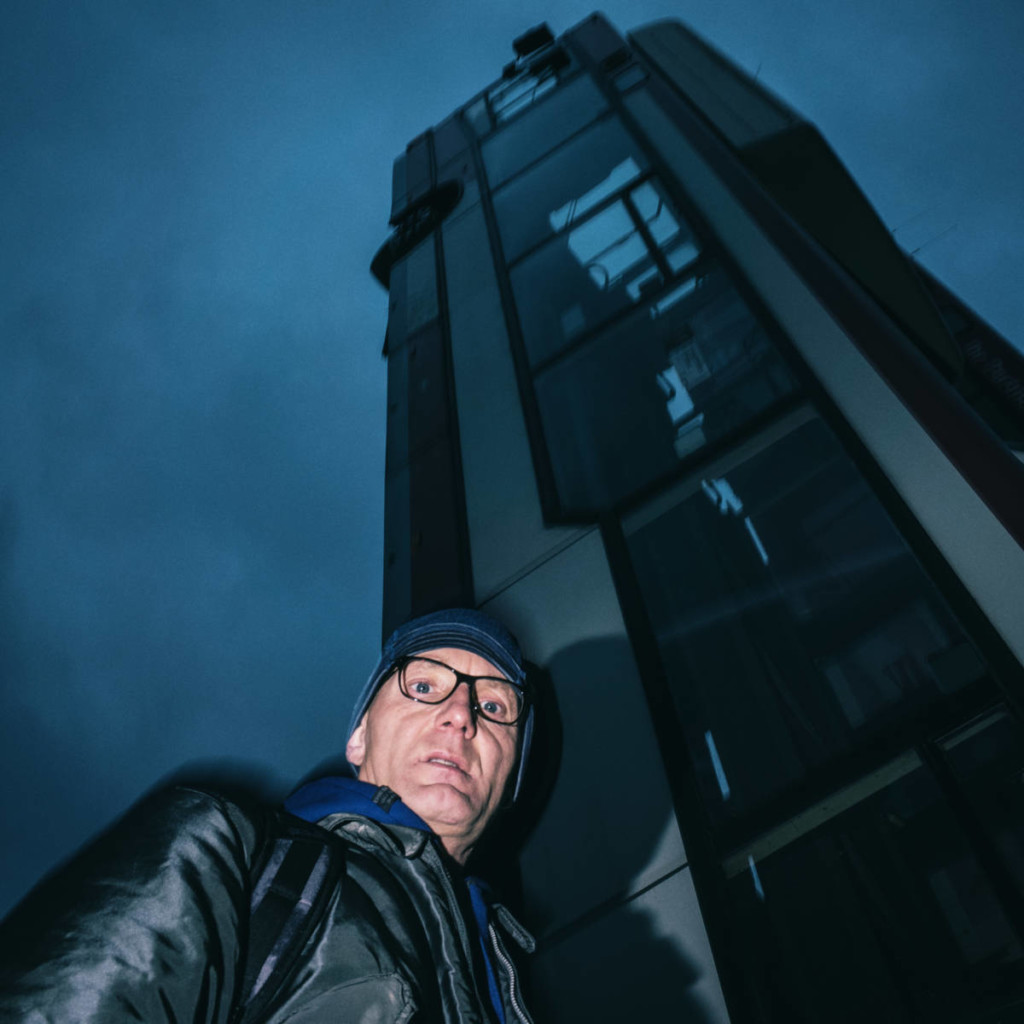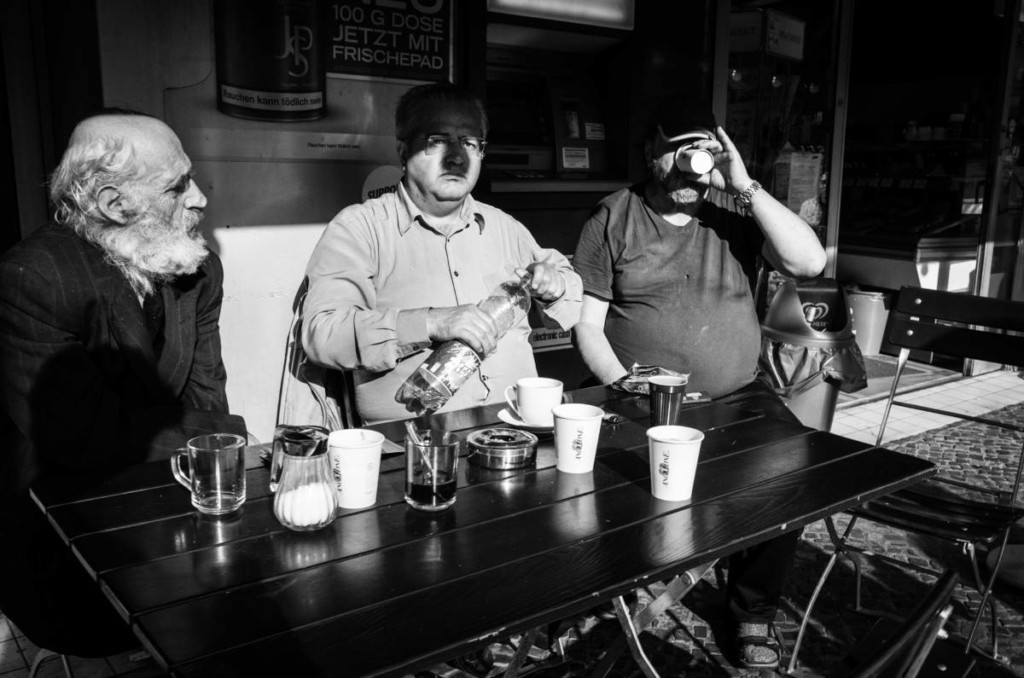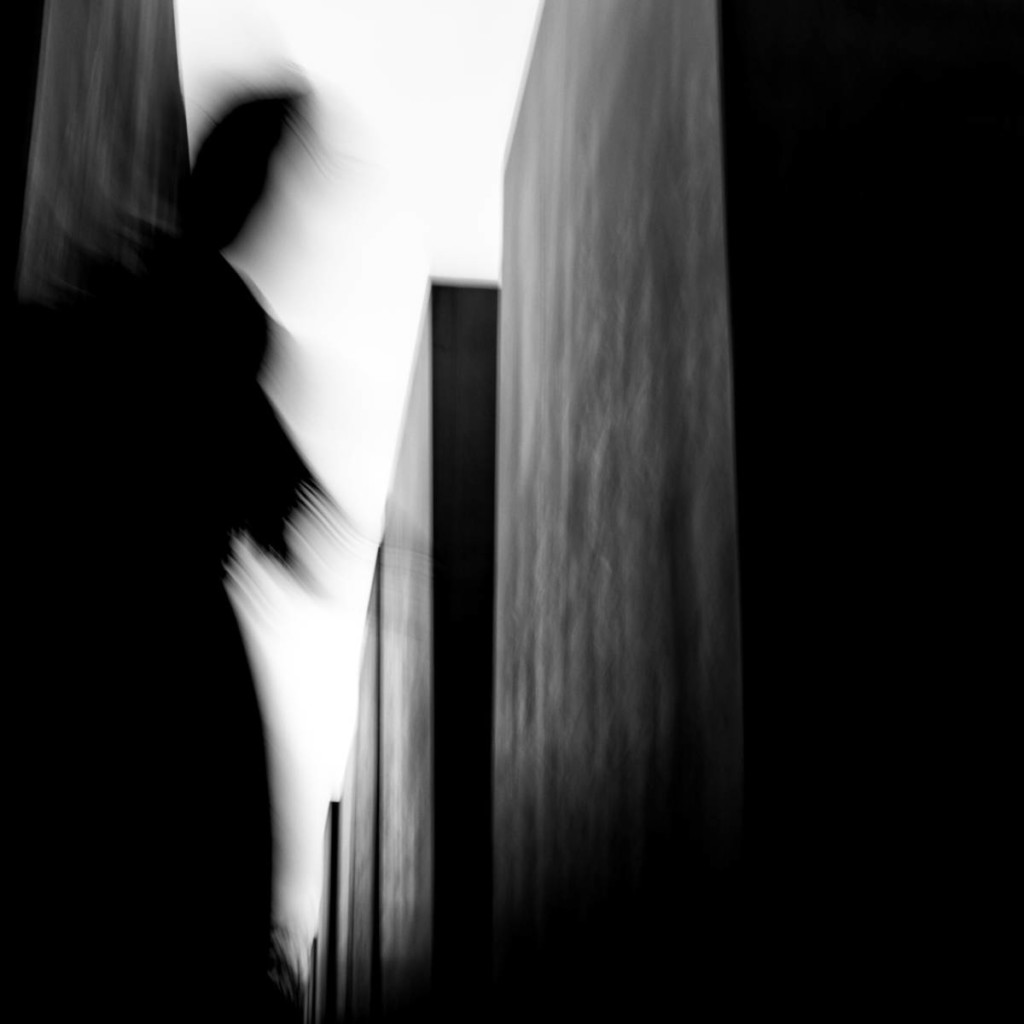Dear reader,
the title might sound a little attention-grabbing for you, but if you understand my background and the actual laws for Street Photography in Germany then you will comprehend my concern for public photography and the fear that Street Photography could be illegal in the future. There is an outcry that Street Photography should be illegal and privacy rights weigh more than the art or documentary value of Street Photography. Following I want to present my view as a Street Photographer about this topic and describe the importance of this genre. Of course, this isn’t a totally objective analysis but represents my personal view.

Street Photography is illegal in Germany
I am not a lawyer and often times laws aren’t clearly interpretable in one certain way, but vary on a case-by-case basis.
There is an ongoing lawsuit following a photograph that was exhibited by Espen Eichhöfer. A woman that found herself on one of the photographs protested and the picture had to be removed from the exhibition. Following this dispute are also compensation claims which are still ongoing. Without going into further detail, this is the exception and there aren’t any other cases known in the Street Photography landscape in Germany.
Nevertheless, it shows that the problem is real and that as a Street Photographer you potentially have to deal with lawsuits in Germany where Street Photography is illegal.
Germany
In Germany, it is allowed to take pictures in public. Although a lot of people are misinformed and believe that it is even illegal to photograph in public places, this isn’t clearly the case. Therefore you aren’t legally obliged to delete photographs if someone demands it on the street.
Yet, it isn’t allowed to publish any photograph without the permission of every person visible in the picture. This means, that every time I take a picture I would have to get the permission of every person involved. Otherwise, I wouldn’t be allowed to publish the photograph.
In reality, this is near impossible, not only do we take a lot of images, but if there are multiple people visible it would be impossible to stop everyone from leaving the scene and asking for permission at the same time.
Adding the increasing bureaucracy and documents, Street Photographers in Germany wouldn’t be able to spend time on the streets anymore but deal with the paperwork the whole day.
In recent years there also tendencies to even tightening the law. For example, has a law been introduced that forbids taking images of people in predicaments. While the law definitely makes sense and aims to stop voyeurs at emergency scenes, it isn’t far-fetched to expand the idea to public photography in general.

USA
In the United States and many other countries, the laws are more Photography friendly. People that are in public pretty much lose their right to privacy and can be photographed openly.
You are allowed to publish photographs taken in public spaces without the consent of the subjects.
This makes it easier for Street Photographers to not worry much about legal repercussions. Nonetheless, one shouldn’t recklessly publish photographs under any circumstances without thinking about the consequences.
Since Street Photography is not illegal and clearly allowed, the photographer is able to set his own rules and has more safety in publishing his work.
Street Photography and its Candid Nature
If the law states that we need permission, why can’t we ask beforehand and arrange the scene afterward? Why is it important to photograph genuine people? To discuss the legal status of Street Photography it is important to comprehend the importance of candid pictures.
Street Photography, Photojournalism or Documentary Photography all share the same characteristic that they feature mainly candid images. While some images in Photojournalism can be staged, like portraits, to tell a story and introduce characters, I feel that Street Photography should be 100% candid.
The umbrella term for stage people photography is the portrait. Now there are some people out there claiming that staged portraits on the street are Street Photography. But not everything that happens on the street is Street Photography, nor does Street Photography need to be on the street. The term itself is a little misleading and simply describes candid photography in a public place.
Candid in this case means unstaged or posed, but authentic and real. Giving instructions to your subject, or influencing the scene in a way that it becomes unnatural disqualifies it in my opinion as a Street Photo. Even influencing the scene as a Street Photographer yourself can alter the situation in an artificial way.
This is also the reason why I despise smiles in images. They are the proof that you as the photographer were too slow or intrusive. The smile is usually not a sign of genuine happiness when done to a stranger, but a masquerade for the insecurity of people. They don’t show a “real” reaction or the true inner self. Therefore they are in the same category as the typical portrait smiles, which are an act too.
Street Photography as a candid genre aims to display real situations without outside interference. Just like Hollywood Movies are based on a written made up script, the only script we should have for Street Photography is life itself.
In an ideal world, we as Photographers would be the invisible observer capturing the candid moments of everyday’s life at a certain time in a certain place.

Ethics
Street Photography doesn’t require consent between the Photographer and the Subject.
When simply stating this fact, it is quite obvious that we have an asymmetrical power where the photographer is in a higher position than the subject. When comparing it to usual portrait photography, there isn’t such an imbalance. Both parties usually sign a contract or at least have a mutual agreement that they are both happy with.
Street Photography is not fair, balanced or even involves both parties in the use of the images. So simply considering this statement, it is comprehensible that the judiciary wants to protect the disadvantaged party. The government can try to balance this power by banning Street Photography altogether. Some go even so far to call Street Photography a crime for exploiting innocent people.
But should Street Photography be illegal, or does it create any higher value?
Bruce Gilden once has said that he doesn’t follow any ethics because we already have to follow rules anywhere else in our daily life.
This is a very harsh statement, which I don’t really agree with.
Even in the freedom of arts, we should follow at least some basic guidelines.
I follow the basic rule that I wouldn’t publish a picture that I wouldn’t want to see online if I would see myself in it. Since my own tolerance is pretty lax, I also prefer to give everybody the chance to say no.
This means that I don’t photograph kids or any person that wouldn’t be able to say no himself. Including in this rule are photos from far away, which I don’t take anyway, but would fall into this category.
In this case, I agree with Bruce Gilden who thinks that people photographing other people from the comfort of being hundreds of feet away with a Tele lens are creeps and not Street Photographers.
In my opinion, the subject and photographer should be on an equal footing and not one having power over the other. It takes both for a good Street Photograph, the subject as well as the photographer.

Concerns
On the other hand, I understand the concerns people have when they are being photographed. Digital images on the Internet can be shared to an extent that no one will have any control over them. This may not have been such an obvious problem before the digital age, but who would have been able to stop the distribution of images through newspapers back then?
Then there is also the fear that photographs can be potentially damaging to the subject. For example, being written sick and photographed in public in an activity that might be contrary to the illness. Subsequently, the employee could be fired.
I hear that argument very often when explaining Street Photography. While this is a very unlikely event in Street Photography and more realistic for News reporters covering the latest iPhone release in front of an Apple store where people spent days in advance, a lot of people are still afraid over a photograph.
Well, the reality is that the Photographer is not responsible for the wrongdoings of the subject. If you decide to take a day off and get caught, it is your fault and not the photographer’s one. Everyone is responsible for himself and should know the risk of his wrongdoing.
Don’t shoot the messenger.
The Value of Documentary Photography
Besides having the negative side effects, I believe that there are very good reasons to do Street Photography and that it becomes increasingly important for our society.
This might seem strange, since the time we live in is probably the best recorded time in history. Almost everyone has a smartphone with a built-in camera and security cameras cover more and more area every year.
Going back in history there isn’t a lot left that shows us how the life of people was in an authentic manner. Even only 150 years ago in history, Documentary Photography wasn’t really a thing. Cameras were too expensive, heavy and slow to capture everyday’s life on the street. So we have to rely on narrated stories, paintings or written text to understand how life was back then.
These forms of documents may appear as authentic, but they also undergo changes, because they rely on interpretation by the narrator, painter or writer. Candid Photography is the closest representation of reality that you can get. There is no man-in-the-middle, just the camera and the shutter button that captures the moment. To be fair, the photographer has the freedom to choose the frame, but that aside, Street Photography should be kept clean of any alteration in Photoshop.
And no, smartphone selfies are not an alternative to Documentary Photography. Imagine that the only thing future generations would see is a selfie plastered Facebook wall. This isn’t certainly a real representation of today’s world. It is heavily distorted and filtered to show only positives sides.
Vivian Maier one of the most popular figures in Street Photography created an archive that is now potentially worth millions of Dollars, although dying penniless. Her documentation of Chicago shows the lifestyle, fashion and attitude to life in that era.
When viewing these images, it is like a time-travel and instead of some fiction, it is the reality you can experience.

The Art Factor
Besides the pure documentation of life, some Street Photographers also approach a more artistic way of photography. Instead of simply displaying what they see and preserve the moment, they leave room for interpretation and beauty.
With simple means that are available to everyone Street Photographers can show the world in their own little twist.
“Beauty in the Mundane” is an often used phrase to describe what we search for. A lot of people are numb to their environment. Either they are distracting themselves with Smartphones or music, or they are simply too tired from their job to be aware of their surroundings.
Therefore, Street Photography in my opinion also presents the value to show what may be hidden to most. To be creative with the environment and to show different aspects of life.
This wouldn’t be possible and authentic when asking for permission first and taking the pictures afterward.
Should Street Photography be illegal?
Of course, as a Street Photographer myself it isn’t a surprise that I hold the value of Street Photography higher than the privacy rights of people in public places when it comes to the legal status of Street Photography.
Street Photography isn’t the mere display of people, but a documentation of the Zeitgeist and the life itself. Pictures of the present age don’t appear as valuable today as they are in maybe 10 or 20 years.
In the future, pictures of today will be seen very differently and there are aspects of life that might get lost if we don’t cherish those moments with the help of cameras and Street Photography would be illegal.
Rendering Street Photography or Documentary Photography illegal would be like erasing our past. I believe that as a society it is important to know where current developments have their roots and that Photojournalism is one part of this conscious. Without the work of brave photographers in World War II, the narrative might have been totally different and influenced even more by propaganda.

Candid Photography hasn’t any outside influence than life itself. If the pictures are hard to look at because the photograph tells a heart-breaking story, then this is life – not the photographer – which produces such a story.
Street Photography will always be important in showing the genuine life of a city at a certain time and photography will never be silenced.





















